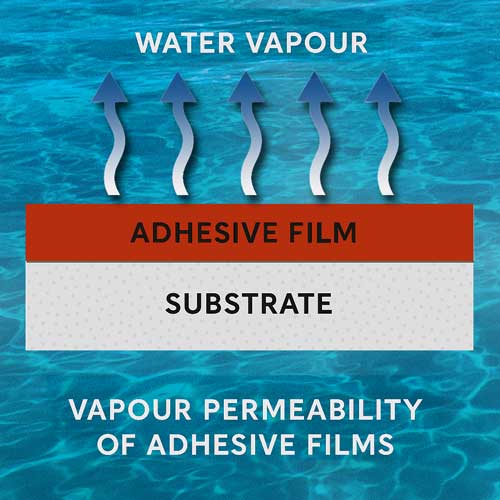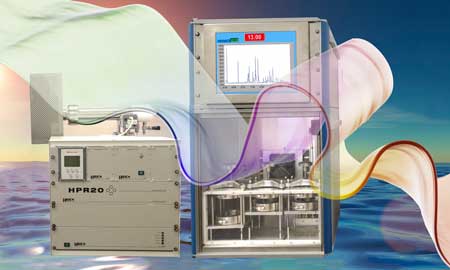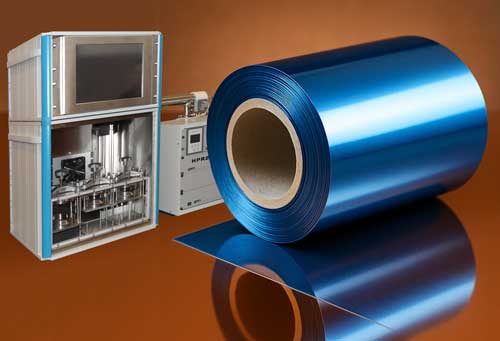The Vapour Permeability of Adhesive films
 Vapour permeability is a critical property in the design and performance of adhesive films, particularly in applications where moisture management, durability and bond integrity are key concerns. Here ia’s an overview of why it matters and how it affects various aspects of adhesive film performance:
Vapour permeability is a critical property in the design and performance of adhesive films, particularly in applications where moisture management, durability and bond integrity are key concerns. Here ia’s an overview of why it matters and how it affects various aspects of adhesive film performance:
What is Vapour Permeability?
Vapour permeability refers to a material’s ability to allow the passage of vapour (water vapour or any other gas) through it. In adhesive films, this governs how moisture can move through the film structure, which is especially important in layered assemblies and sealed environments.
Why Vapour Permeability Matters in Adhesive Films
1. Moisture Management
- In applications like electronics, medical devices, packaging, or construction, the ability of an adhesive film to either block or allow vapours (usually water or hydrocarbon based) determines how well it controls internal condensation
- Films with a permeability that is too low can trap moisture behind or within substrates, leading to delamination, corrosion or microbial growth
- Films with controlled or high permeability can allow vapour to escape, preventing moisture build-up
2. Substrate Protection and Longevity
- Barrier adhesives are designed to minimise vapour ingress, protecting sensitive components such as circuits, optical elements or pharmaceuticals
- Conversely, in breathable systems such as wound dressings or building membranes, higher permeability helps maintain a dry but hydrated environment – balancing water retention and release
 3. Adhesion Stability
3. Adhesion Stability
- Vapours, particularly including water or hydrocarbon vapours, can weaken adhesive bonds in many ways including by plasticising the adhesive, promoting hydrolytic swelling, chemical degradation, solvent attack or interfacial contamination
- Permeability must be tailored to ensure the adhesive maintains performance over time, especially under temperature and humidity cycling
4. Product Shelf-Life and Performance
- In laminated structures such as flexible packaging, adhesives form part of the barrier architecture. Their vapour transmission rate (water or any other gas or vapour) must be in harmony with adjacent layers
- Poorly matched vapour permeability can lead to reduced shelf life, especially in food or pharmaceutical packaging
5. Functional Requirements in Specific Industries
- Medical: Adhesive films in wound care must be semi-permeable – allowing moisture vapour to escape while blocking pathogens
- Electronics: Films must protect against water or chemical cleaning vapours ingress to prevent short circuits or corrosion in sensitive components
- Aerospace and automotive: Adhesives used in structural or sealing applications must maintain barrier performance under thermal stress and vibration
Measuring Vapour Permeability in Adhesive Films
Versaperm’s testing equipment allows precise measurement of vapour transmission through adhesive films, including:
- Water vapour (WVTR)
- Hydrocarbons, helium and all other non-reoscribed gases, where trace leakage or ultra-low permeability is critical
- Under varying temperatures, humidities and pressure differentials
Solutions
- Optimise formulations (e.g., polymer blends, tackifiers, plasticisers)
- Verify performance in multi-layer structures
- Ensure compliance with industry standards (e.g., ASTM, ISO)
 Summary: Why It’s Important
Summary: Why It’s Important
Concern |
Role of Vapour Permeability |
Vapour permeability control |
Prevents blistering, corrosion, delamination |
Bond integrity |
Avoids adhesive degradation due to trapped vapour |
Barrier function |
Ensures product protection in sealed environments |
Breathability |
Enables moisture regulation in medical or construction uses |
Product performance |
Matches functional expectations in complex assemblies |


 Vapour permeability is a critical property in the design and performance of adhesive films, particularly in applications where moisture management, durability and bond integrity are key concerns. Here ia’s an overview of why it matters and how it affects various aspects of adhesive film performance:
Vapour permeability is a critical property in the design and performance of adhesive films, particularly in applications where moisture management, durability and bond integrity are key concerns. Here ia’s an overview of why it matters and how it affects various aspects of adhesive film performance: 3. Adhesion Stability
3. Adhesion Stability Summary: Why It’s Important
Summary: Why It’s Important